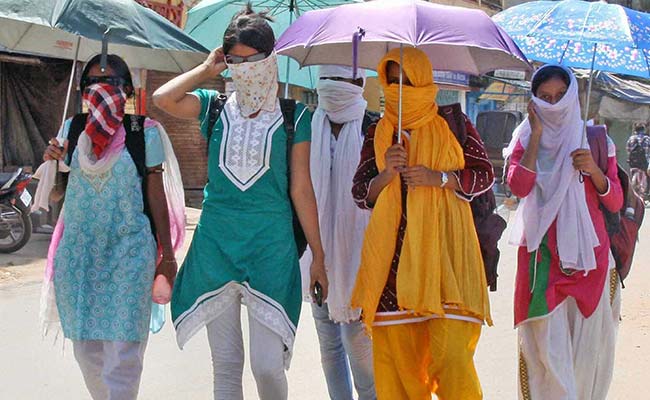Pakistan was most affected due to regional greenhouse gas emissions (GHGs). Pakistan has less than one percent GHG emissions but the developed world has neglected the country despite its increased burden on natural disasters. Pakistan has seen as many as 152 extreme weather events in the past 20 years. The United Nations has put Pakistan among the top 23 most drought- hit countries and is among the top ten countries affected by climate change.
The heatwave almost all over the country has spiked up and gained longevity, and the glaciers in the north are melting rapidly because of the prolonged and extreme temperature spike in the country.
Pakistan has been in the grip of severe heatwave for the last couple of months and the traditionally spring months of March and April have been turned into the hottest months in most parts of the country. March 2022 remained the hottest recorded month since 1961. During the past two months or so, people in both India and Pakistan have experienced levels of heat higher than national and global records. The Meteorological Department of Pakistan has already hinted at the current heatwave persisting till June 2022. Pakistan thus has entered for the first time into the summer without any spring season and if adequate measures for appropriate preparedness were not taken in a timely way, then it may occur again in the next year due to global warming.
Prime Minister Shehbaz Sharif has constituted a Task Force on Climate Change in view of the country’s currently facing a heatwave and the melting of glaciers. The Task Force so formed has been tasked to develop a comprehensive strategy on priority basis to mitigate the effects of climate change in the country and to prevent incidents such as the glacier incident in Hunza.
Save yourself and your families from heatwave hazards, take preventive measures, avoid avoidable and non-essential exposure in excessive heat and remain alive and healthy while praying to the Almighty for the safety of all around you, in the country and the world
Quite appreciably, the Prime Minister has directed all the concerned ministries and agencies concerned at the federal and provincial levels to take immediate measures for preventing food and water shortages and ensuring conservation of water and forests in the country.
Pakistan is the third most water-stressed country in the world and most unfortunately its status is gradually shifting from water-stressed to water-scarce nation, which will obviously have a huge adverse impact on the country.
A recent glacial lake outburst flood (GLOF) incident occurred due to a melting glacial lake formed at Shisper Glacier that partially damaged the Karakoram Highway. According to the figures available from official sources there are 30-31 potential lakes to outburst out of 3044 total serious glacial lakes. Shisper Glacier was formed in 2018 which is a surging glacier which was visited by some senior officials in February 2021 to observe the situation. First warning for a GLOF at Shisper was received on March 16. If there have been no life and livestock losses reported, this was mainly due to the early warning and preparedness by the agencies concerned at Gilgit-Baltistan and Hunza.
Federal Climate Change Minister Senator Sherry Rehman along with senior federal and provincial officials concerned as well as the Chairman of the National Disaster Management Authority (NDMA), highlighted various aspects of the onrushing climate change, global warming and prevailing heatwave in most parts of the country while addressing a new conference some days back in Islamabad.
A Climate Change Ministry senior official said on the occasion that in Pakistan climate science was a matter of decades to come, and the scientific models predicted for 2030 have already started activating 10 years prior to the projected timelines.
It is good to note that in view of prevailing severe heatwave in most parts of the country, the Federal Climate Change Ministry has already established more than 1000 heatwave centres each in Sindh and Punjab provinces and the Ministry was also issuing advisories to the provinces in this regard regularly.
Back in 2015, an extended heatwave in the Subcontinent had resulted in more than 2500 deaths in India and over 1200 in Pakistan, mostly in Karachi. According to Climate Change’s 6th Assessment Report, cities like Karachi in Pakistan are most likely to experience conditions equivalent to the 2015 heatwave on a basis of an increase of temperature by 1.5°C above the pre-industrial levels, the goal for limiting global warming under the 2015 Paris Agreement.
Population density, the scale of economic activity and rapid urbanization in the region all make the Indian Subcontinent more vulnerable to extreme weather events, according to the weather and global warming experts.
Heatwaves are prolonged periods of excessive heat with temperatures more than 10 degrees higher than normal. According to the World Health Organization (WHO), exposure to high levels of heat can cause exhaustion, heat stroke and hyperthermia. Deaths or hospitalization are likely to occur either immediately or after some days of exposure which can also worsen chronic illnesses including cardiovascular, respiratory and diabetes-related conditions.
The human body has limited ability to adapt to heatwave-like temperatures, a term that accounts for both heat and humidity. Around 95°F is considered the upper limit that human beings can survive above which prolonged exposure can prove fatal, the experts have duly warned.
Save yourself and your families from heatwave hazards, take preventive measures, avoid avoidable and non-essential exposure in excessive heat and remain alive and healthy while praying to the Almighty for the safety of all around you, in the country and the world.























